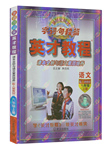题目内容
Sunshine For All
The Beijing Sunshine Secondary School students are holding a charity show at the school hall of Beijing Sunshine Secondary School, Sunny Street, Sunshine Town.
Date: 29 April
Time: 7:30 p. m.一9:00 p. m.
We hope to raise money to help poor children go to school.
Ticket price: $20
Donations are welcome.
Programme:
7:30 p. m. Introduction
7:40 p. m. Songs
8:00 p. m. Break
8:15 p. m. Speech
8:30 p. m. Drama
9:00 p. m. End of the show
Project Hope is an organization that raises money to build schools and buy books for poor students.
We would like to thank the following for their help and support:
The teachers at Beijing Sunshine Secondary School
The Star Shopping Mall for the costumes
Sunshine Advertisement Company for the posters
【小题1】Where will the charity show be held?
| A.In the classroom. |
| B.In the meeting room. |
| C.In the shopping mall. |
| D.At the school hall. |
| A.7:30 p. m.一9:00 p. m., 29 April. |
| B.7:30 a. m.一9: 00 a. m., 29 April. |
| C.7:30 a. m.一9: 00 p. m. 29 May. |
| D.7:30 p. m.一9: 00 p. m. 29 May. |
| A.To build schools. |
| B.To help poor children go to school. |
| C.To buy books for poor students. |
| D.To hold the charity show |
| A.Watch a drama. | B.Enjoy songs. |
| C.Have a rest. | D.Listen to a speech. |
| A.Sunshine Advertisement Company for the posters. |
| B.The Star Shopping Mall for the costumes. |
| C.The teacher at Beijing Sunshine Secondary School. |
| D.All of the above. |
【小题1】D
【小题2】A
【小题3】B
【小题4】C
【小题5】D
解析

 字词句段篇系列答案
字词句段篇系列答案Every school has notice boards. Let's see what is on the notice board of an American school.
【小题1】 46. From , parents can get information on the parents meeting.
| A.School Policy | B.Report Card |
| C.After-school Program | D.Class Announcement |
| A.certain school rules | B.after-school activities |
| C.plans for classes and tests | D.children's school life and work. |
Report Card.
| A.1 | B.2 | C.3 | D.4 |
| A.from 3:30 to 4:30 | B.from 3:30 to 6:00 |
| C.from 4:30 to 6:00 | D.from 6:00 to 7:00 |
| A.hand in a note | B.call at 524-9752 |
| C.check in at the office | D.telephone the school |
For many years, no one could communicate with people who had been born without hearing. These deaf people were not able to use a spoken language.
But, beginning in the 1700s, the deaf were taught a special language. Using the language, they could share thoughts and ideas with others. The language they used was a language without sound. It was a sign language.
How did this sign language work? The deaf were taught to make certain movements using their hands, faces, and bodies. These movements stood for things and ideas. People might move their forefingers across their lips. This meant, “You are not telling the truth.” They might tap their chins with three fingers. This meant, “my uncle”.
The deaf were also taught to use a finger alphabet(字母表). They used their fingers to make the letters of the alphabet. In this way, they spelled out words. Some deaf people could spell out words at a speed of 130 words per minute.
Sign language and finger spelling are not used as much as they once were. Today the deaf are taught to understand others by watching their lips. They are taught how to speak.
【小题1】In the 1700s, the deaf were taught __________.
| A.to speak | B.to watch others |
| C.a sign language | D.a spoken language |
| A.the finger next to the thumb (拇指) | B.three fingers |
| C.a language | D.hands |
| A.how the deaf communicate | B.learning to spell |
| C.teaching the deaf to speak | D.writing sign languages |
| A.Deaf people draw signs |
| B.Deaf people can’t use their fingers. |
| C.Many deaf people now can speak |
| D.Deaf people speak with their fingers. |
FUN TIME
Are you tired of the puzzles you usually do? Sudoku is a new choice. Sudoku consists of the Japanese characters Su (meaning “number”) and Doku (meaning “single”), but it was not invented in Japan. It was created by Howard Garnes in 1979. The puzzle was first introduced into Japan by Nikoli Puzzle Company in 1984. In 1986, Kaji Maki, the president of Nikoli made the rules strict and clear. Soon in the same year Sudoku became popular in Japan. In November 2004, The Times, a British newspaper, first printed it in the newspaper. It became an international hit in 2005. Now Sudoku becomes very popular all over the world.
The rule of the puzzle is to fill in the grids (格子) so that every row, every line and every 3×3 box has the numbers 1 to 9. Here is a Sudoku. Please relax and enjoy. It’s fun!
| 9 | 2 | 4 | 7 | 6 | 3 | 1 | 5 | 8 |
| 5 | 3 | 6 | 8 | 9 | 1 | 4 | 2 | 7 |
| X | 7 | 8 | 2 | 5 | 4 | 9 | 6 | 3 |
| 7 | 1 | 9 | 3 | 4 | 2 | 5 | 8 | 6 |
| 4 | 8 | 3 | 6 | 1 | 5 | 2 | 7 | 9 |
| 2 | 6 | 5 | 9 | 8 | 7 | 3 | 4 | 1 |
| 3 | 9 | 7 | 4 | 2 | Y | 6 | 1 | Z |
| 6 | 5 | 2 | 1 | 7 | 9 | 8 | 3 | 4 |
| 8 | 4 | 1 | 5 | 3 | 6 | 7 | 9 | 2 |
根据以上杂志专栏内容,回答下列问题。
【小题1】Who created Sudoku?
| A.Howard Garnes. | B.Sudoku. | C.Kaji Maki. | D.Nikoli. |
| A.He was the boss of Nissan Company. |
| B.He helped to make Sudoku popular in Japan. |
| C.He was the president of The Times. |
| D.He is an American. |
| A.Sudoku wasn’t invented in Japan. |
| B.It was The Times that first printed Sudoku in the newspaper. |
| C.Each grid has more than one number. |
| D.It became popular around the world in 2005. |
| A.5. | B.4. | C.3. | D.1. |
| A.8. | B.5. | C.2. | D.4. |
If you plan to take your pet on a trip,prepare ahead of time. At least two weeks before you leave,take your pet to a vet. See if he or she is tit for travel and ask if he or she should have any medicine before leaving. The vet may suggest certain pills for sickness or for calming the pet.
Some states or foreign countries have health laws that say animals must have certain injections(注射)before they can be allowed to enter. Your vet may have this information. You can also get help on the United States and Canadian laws from a book published by the Department of Agriculture which some libraries have. For information on foreign countries, check with their consulates (领事馆).You can also ask the airlines on which you are travelling.
Find out if the places where you plan to stay allow pets because many do not.
If you are going by plane or train,ask if pets are allowed. If they are,ask where they will be kept and who will care for them. The big bus lines in this country do not allow pets.
Choose your pet’s box carefully. Plastic boxes are better than cardboard or wooden ones because they can' be chewed(嚼碎).
If going by plane or train during warm weather,try to go in the cooler early morning or evening hours. Also try to avoid (避免)very cold winter weather because pets often suffer from cold. Even in your own car, be careful. Do not leave the animal inside with the windows closed because the car may become too hot or too cold.
【小题1】The main idea of this passage is to_________
| A.warn people to leave their pets at home |
| B.give general information about pet travel |
| C.tell people how to choose their pet boxes |
| D.tell people about foreign pet laws |
| A.doesn' need to make any special plans |
| B.should stay at friends' homes |
| C.should make plans before leaving home |
| D.should travel by bus instead of plane |
| A.it costs too much to take pets on trips |
| B.some pets may not be well enough to travel |
| C.all train lines treat pets exactly the same |
| D.pets are welcome everywhere |
| A.A vet. | B.A pet owner . |
| C.A bus driver. | D.A pet shop owner. |
现在网络越来越发达,中学生上网的利弊已成为人们讨论的焦点。请参考下面的信息并结合自己的观点写一篇60—80词的短文谈谈你的看法。
| Pros | Cons |
| 课后放松[来源:学科网ZXXK] | 长时间上网有害健康 |
| 辅助学习 | 沉迷网络游戏,不思学业 |
| 传递信息快捷,开拓视野 | 不良网站,误导学子 |
| 网络交流,交友…… | 虚拟网络,真假难辨…… |
